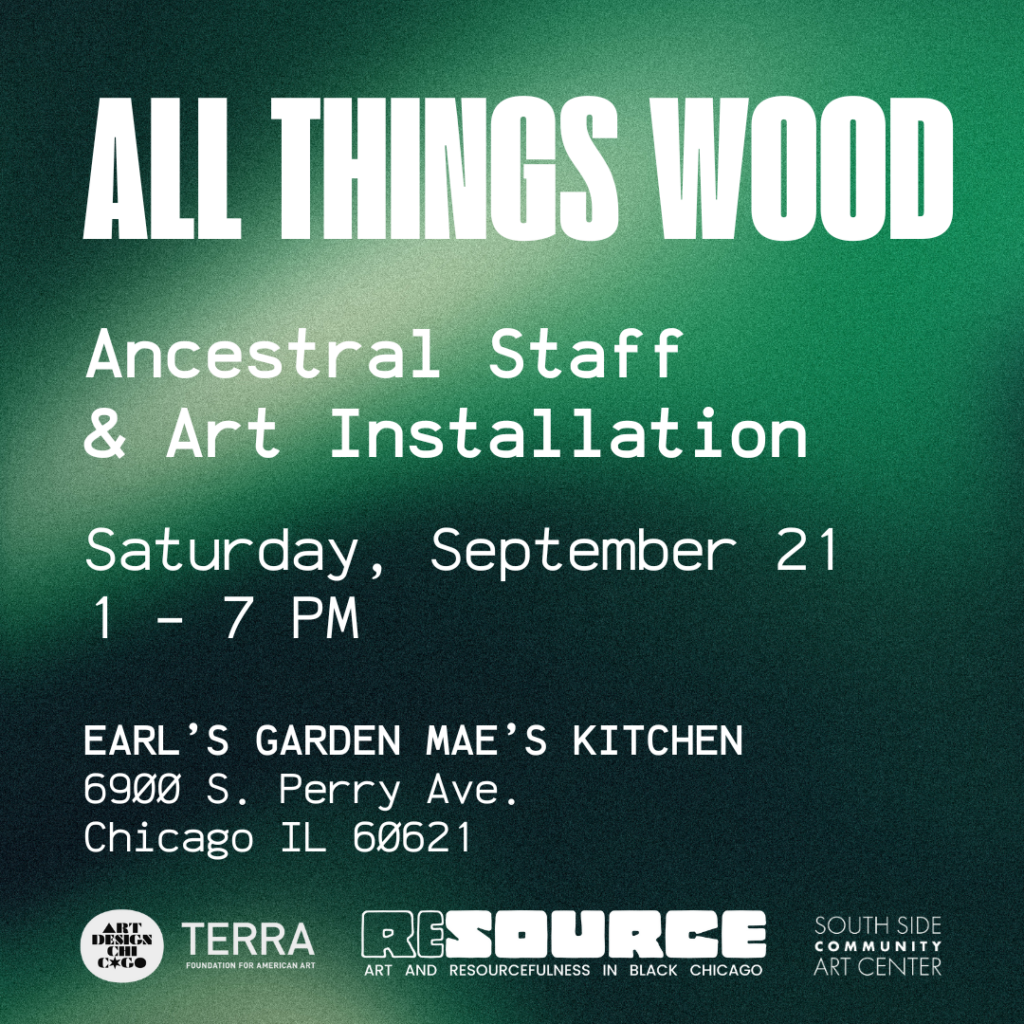Join Earl’s Garden & Mae’s Kitchen for an evening of food, fun, and culture as we celebrate ten years of art and gardening. The Ancestral Staff and Art Installation is the culmination of our work with One Summer Chicago youth and young adult programs. We will unveil an installation of African staffs, made from reclaimed wood, along with portal doors and Ndebele-style mural panels. Come share in our success! Free and open to the public.

This event has passed.
All Things Wood: Ancestral Staff and Art Installation
September 21
@
1:00 pm
-
7:00 pm


